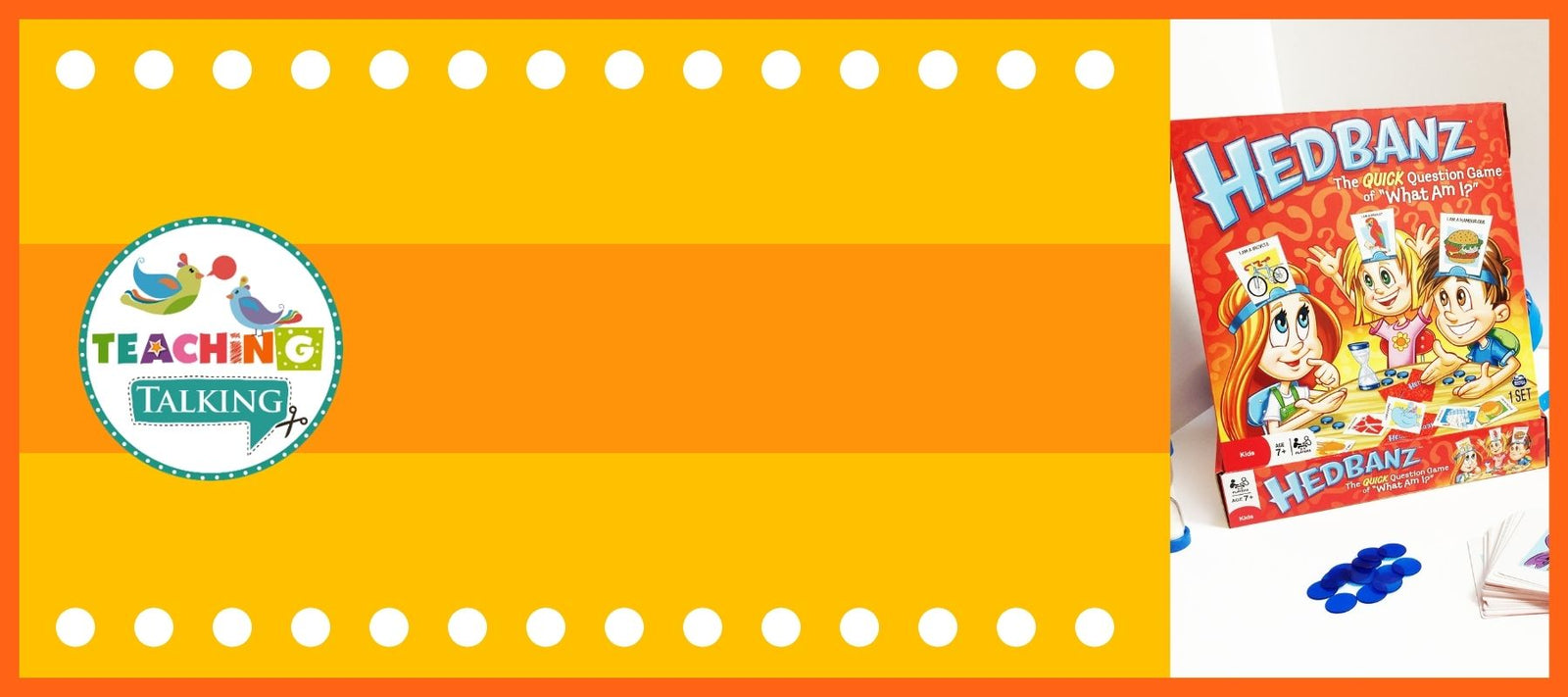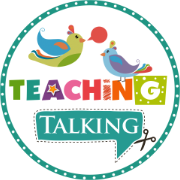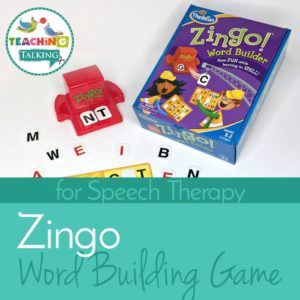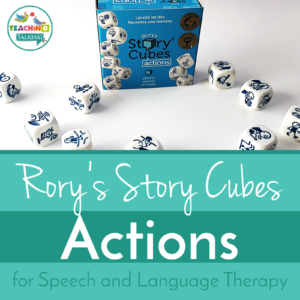
Hedbanz for Speech Therapy
April 14, 2015 3 min read
Hedbanz for Speech Therapy is great fun for school-aged kids learning to ask and answer questions.

Number of Players: 2 – 6
Ages: The box says 7 years and up. You may need to adapt the game for kids who have delays or perhaps they are just developing their questioning skills. To solve this problem, lengthen each turn or just get rid of the timer altogether. Then you can easily give clues to get them started on the right track.
Target: Hedbanz can teach basic vocabulary, and the cards can be used for learning simple categorization of food, animals, and furniture. Headbanz in Speech Therapy is great for teaching kids to ask and answer questions. The kids can get creative with their questioning, and it also teaches them simple gaming strategies.
How the Game Headbanz is Played
I’m sure you have played Headbanz before, but just in case, here is how it goes…

Each player clips one of the plastic headbands onto their head, with a slot facing forward to place the playing card in. Each player takes 3 counters with the object of the game to be the first to get rid of all of your counters by asking questions.
Each player is dealt a playing card face down – no peeking! They place the card into the slot on their headband so everyone else can see it. I usually find that younger kids need help with this part, especially as they may feel tempted to cheat.
The game starts when the timer is turned over. The player has a minute to ask as many questions as they can to try and guess “What am I?” There are help cards with ideas for questions to ask, such as “Am I a pet?” “What would you eat with me?” and “How tall am I?”

Once they are sure of their guess, the player can ask “Am I a …?” and if they are correct, they get rid of a counter and take another card. Those quick off the mark questions could guess several cards inside the minute they have to play.
Once the timer has run out, play passes to the next student. The winner is the first person to get rid of all three counters and guess the card.
Using Hedbanz for Speech Therapy for Asking Questions

I have yet to find a game that is as motivating as this one for teaching kids to ask questions. 'Guess Who' is a great game for younger children but it tends to get a little repetitive and lacks the range of question practice that is possible with Hedbanz.
Kids need to ask all types of questions in order to be able to guess the card so they will learn to use “who, what, why, where, when and how” questions as well as other question forms such as “Did I…?” , “Have I…?” etc.
Using Headbanz for Vocabulary Development and Teaching Simple Categories
The playing cards in my set are nicely illustrated and contain pictures of familiar everyday items. I sometimes use them as a simple vocabulary teaching objective or category sorting task.

It is easy to find and use them to sort into their intended 3 categories of food, animals, and household items (remember 20 questions from our youth?). However, you can also drill down further into each category and have your students pick out the zoo animals separate from the farm animals. You can have them find “food that grows on trees” or “items we keep in the garage”.

This game gives endless possibilities for learning fun, even for those who are not able to keep up with the fast pace of the regular game.
This is a smart and inexpensive SLP purchase that will keep the kids amused for years to come (and you as well....you never know what those kiddos will ask! 😉).
Subscribe
Sign up to get the latest on sales, new releases and more …




